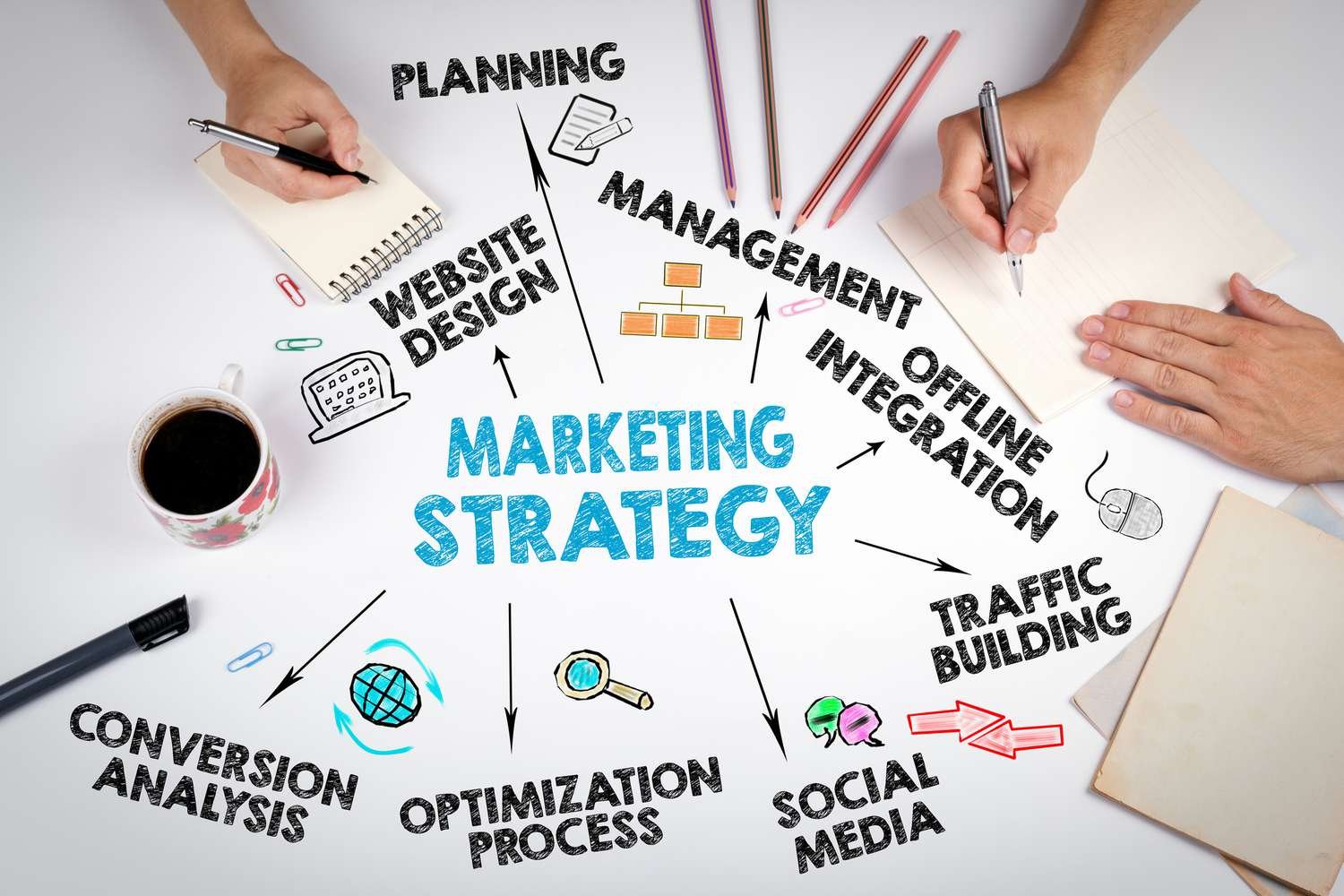In today’s highly competitive marketplace, a well-thought-out marketing strategy isn’t just an option—it’s essential for survival and growth. Whether you’re a small business owner or an established enterprise, recognizing the signs that your marketing approach is lacking can save you time, money, and missed opportunities. In this article, we’ll explore the top 10 signs your business needs a marketing strategy right away, along with actionable insights on how to start building a roadmap to success.
Introduction: The Digital Age Demands a Strategy
Every business aspires to grow, build loyal customers, and establish a distinct brand identity. But without a proper marketing strategy, even the best products or services can go unnoticed. In the realm of digital marketing, where trends shift rapidly and consumer behavior evolves, having a structured approach ensures that your brand remains visible, relevant, and competitive.
A robust marketing strategy outlines your business goals, identifies your target audience, and details the channels and content needed to reach potential customers. It transforms scattered, ad-hoc efforts into a cohesive plan that drives measurable results. Let’s dive into the signs that indicate it’s time to invest in a strategic approach to marketing.
1. Lack of a Clear Brand Identity
The Problem:
One of the first signs that your business needs a marketing strategy is the absence of a clear brand identity. When your brand feels vague or inconsistent, customers might struggle to connect with your company or understand your unique selling proposition (USP).
What It Means:
- Inconsistent Messaging: Your logo, colors, tone, and messaging vary across different platforms.
- Customer Confusion: Visitors to your website or social media channels may not grasp what your business stands for.
- Missed Opportunities: Without a distinctive identity, you risk being overlooked by your target audience.
How a Marketing Strategy Helps:
A well-defined marketing plan begins with brand development. It forces you to answer key questions like, “Who are we?” and “What do we stand for?” This clarity helps you create consistent messaging that resonates with your audience, fostering loyalty and trust.
2. Declining Customer Engagement
The Problem:
If you’re noticing a steady decline in customer engagement on your social media posts, emails, and website content, it’s a major red flag. Engagement is the lifeblood of a successful business marketing plan.
What It Means:
- Fewer Likes, Comments, or Shares: Your social media activity may begin to dwindle.
- Low Email Open Rates: Marketing emails might end up in spam or get little attention from your subscribers.
- Decreased Web Interactions: Visitors might spend less time on your website, or your bounce rate could be on the rise.
How a Marketing Strategy Helps:
Strategic marketing campaigns are built around understanding and engaging with your audience. By analyzing engagement metrics, you can identify what content works and what doesn’t. With a strategic approach, you can tailor your messages, optimize posting times, and improve customer interactions to build a robust community around your brand.
3. Low Website Traffic and Conversion Rates
The Problem:
Your website is often the cornerstone of your online presence. If you’re not seeing the traffic or conversions you expect, there might be a deeper issue with your overall marketing approach.
What It Means:
- Poor Search Engine Rankings: A lack of SEO optimization may cause your website to fall on the lower pages of search results.
- Ineffective Landing Pages: Your website might not be capturing visitors’ attention or guiding them towards a conversion.
- Underperforming Call-to-Actions: Visitors might be leaving without taking any significant actions such as signing up for a newsletter or making a purchase.
How a Marketing Strategy Helps:
A comprehensive marketing strategy integrates digital marketing tactics like SEO, content marketing, and PPC campaigns. By identifying which channels drive traffic and how visitors behave on your site, you can tailor your messaging and optimize your landing pages to increase conversions.
4. Unclear Target Audience
The Problem:
If you’re not sure who your ideal customers are, your marketing efforts are likely to miss the mark. An unclear target audience means you’re wasting resources on reaching people who may never be interested in your offerings.
What It Means:
- Broad Messaging: Your communications are too generic, failing to address the specific needs or interests of a particular group.
- Wasted Budget: Advertising dollars may be spent on platforms or channels that don’t reach your ideal clients.
- Low Conversion Rates: Messages that don’t resonate with your target audience are less likely to convert.
How a Marketing Strategy Helps:
Defining your target audience is a fundamental step in developing your marketing strategy. Through market research and customer segmentation, you can create detailed buyer personas. This allows you to craft customized messages that speak directly to your audience’s challenges and desires, leading to improved marketing outcomes.
5. Ineffective Use of Social Media
The Problem:
Social media platforms are powerful tools for brand building and customer engagement. However, if you’re posting sporadically or using these platforms ineffectively, you’re likely missing out on significant opportunities.
What It Means:
- Inconsistent Posting: Your social media activity lacks regularity and relevance.
- Low Engagement Rates: Posts are not generating the intended reactions or interactions.
- Poor Content Quality: Visuals and copy may not align with your brand or messaging strategy.
How a Marketing Strategy Helps:
An effective marketing strategy includes a robust social media plan that defines what type of content to post, how often to post, and which platforms to focus on. This strategic approach ensures your social media efforts are aligned with your overall business goals and provide measurable results.
6. Relying Solely on Word-of-Mouth
The Problem:
Many small business owners hope that word-of-mouth will naturally attract customers. While referrals are valuable, relying solely on them can severely limit your business growth.
What It Means:
- Limited Reach: You’re only connecting with customers within your immediate network.
- Slow Growth: Without a proactive marketing strategy, gaining new customers becomes more challenging.
- Missed Opportunities: Digital marketing opens up a vast potential audience that word-of-mouth alone cannot reach.
How a Marketing Strategy Helps:
A strategic marketing plan leverages multiple channels—social media, SEO, email marketing, paid advertising, and more—to expand your reach far beyond your existing customer base. By diversifying your approach, you can accelerate growth and solidify your market presence.
7. Unsatisfactory Sales or Revenue Plateau
The Problem:
Even if you’re generating traffic and engagement, it won’t matter if this isn’t translating into revenue. A plateau in sales or a general decline in revenue is a clear sign that something is off.
What It Means:
- Stagnant Growth: Despite efforts to attract visitors and leads, conversions are not increasing.
- Inefficient Marketing Spend: You might be spending a lot on marketing without seeing proportional returns.
- Customer Churn: Existing customers might not be returning, and new customer acquisition is lagging.
How a Marketing Strategy Helps:
A clear marketing strategy helps align your sales and marketing efforts. By establishing measurable goals and performance indicators, you can identify gaps in your customer journey and implement tactics to drive conversions and improve customer retention. This often involves refining your value proposition, optimizing your sales funnel, and continuously testing your strategies.
8. Ad-Hoc, Inconsistent Marketing Efforts
The Problem:
If your marketing efforts are piecemeal and sporadic, you may struggle with maintaining a coherent brand message. Ad-hoc campaigns can lead to disjointed communications that confuse potential customers.
What It Means:
- Random Campaigns: You’re launching marketing initiatives without an overarching plan.
- Inconsistent Messaging: Your communication may vary greatly from one campaign to another, reducing overall brand trust.
- Inefficiency: Without a structured plan, it’s hard to measure what works and what doesn’t, resulting in wasted time and money.
How a Marketing Strategy Helps:
A well-drafted marketing strategy provides a roadmap for every campaign and initiative. It ensures consistency in messaging, visuals, and tone across all channels. Moreover, it allows you to build a calendar for content, promotions, and audience engagement, making it easier to measure success and adjust tactics as necessary.
9. Poor Competitive Positioning
The Problem:
Are your competitors outpacing you in the digital realm? If you find that your competitors are gaining more attention, engagement, and market share, it might be time to reassess your marketing approach.
What It Means:
- Lagging Behind: Your online presence, brand voice, and marketing campaigns are not as effective as those of your competitors.
- Missed Market Trends: You might be slow to adopt new technologies or trends that drive consumer engagement.
- Loss of Market Share: Customers might be gravitating towards brands that are more visible and actively engaging in digital spaces.
How a Marketing Strategy Helps:
A thorough marketing strategy includes competitive analysis. Understanding what your competitors do well—and where they fall short—allows you to differentiate your brand. You can develop unique value propositions and tactical campaigns aimed at capturing a greater share of your target market, ensuring your business stays ahead of the curve.
10. Absence of Measurable Marketing Goals
The Problem:
Without clear, measurable goals, your marketing efforts can feel like shooting arrows in the dark. If you’re not tracking key performance indicators (KPIs), you have no way of knowing if your marketing strategy is working.
What It Means:
- No Clear Direction: Your campaigns lack quantifiable targets such as website traffic, leads, sales, or social media engagement.
- Inability to Optimize: Without data, it’s difficult to pinpoint which aspects of your marketing need adjustment.
- Wasteful Spending: Money and time may be invested in channels that do not provide a return on investment (ROI).
How a Marketing Strategy Helps:
Setting SMART (Specific, Measurable, Achievable, Relevant, Time-bound) goals is at the heart of a solid marketing strategy. By defining clear KPIs and regularly analyzing your performance, you can adjust your tactics to ensure that every campaign contributes to your overall business objectives. This data-driven approach not only improves efficiency but also boosts overall growth and profitability.



Leave A Comment